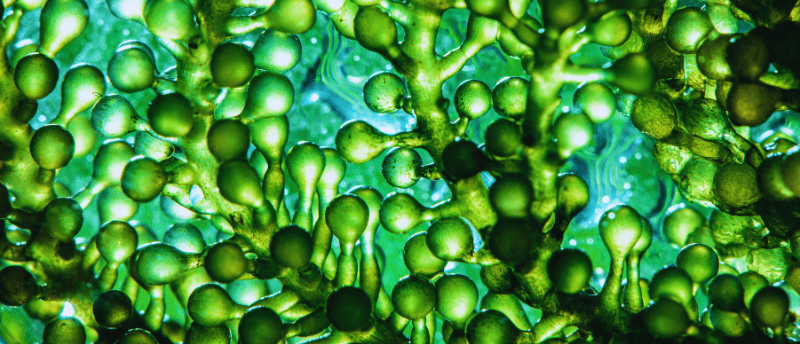Look out, it’s PKZILLA-1! New protein takes top spot as largest identified

Researchers discover the largest protein yet identified in biology, all thanks to an investigation of a marine alga’s creates toxin synthesis.
In a recent study, researchers at UC San Diego’s Scripps Institution of Oceanography (CA, USA) set out to uncover the machinery algae use to produce their intricate toxins to learn more about how we could assemble chemicals for synthetic biology and drug development purposes; however, in the process, they discovered the largest protein yet identified in biology.
Commonly known as golden algae, Prymnesium parvum is a single-celled microorganism that lives in both fresh and salt water all over the world. It is known for the toxin it produces, called prymnesin, which damages the gills of fish and other water-breathing animals. Prymnesin is part of the polyketide polyethers family, a notorious group of toxins known for their large size and complexity. For many years, researchers have tried to understand how these microorganisms are able to produce the most intricate chemicals in biology.
Since 2019, members of the current research team have been trying to decipher how golden algae produces its toxin on a biochemical and genetic level. The team began by sequencing the alga’s genome and used non-traditional methods to identify super-long genes. They found massive polyketide synthase genes, and their corresponding enzymes, that have previously evaded detection. In this process, the team identified the largest protein yet identified in biology, calling it PKZILLA-1. This protein is 25% larger than the previous record holder titin, a protein in human muscles that can reach 1 micron in length. They also identified PKZILLA-2, another large protein. Shocked by their size and production by golden algae, the researchers wondered if the large proteins were directly involved in prymnesin production.
 Meet the protein that drives nerve damage in traumatic brain injury
Meet the protein that drives nerve damage in traumatic brain injury
Researchers have uncovered the protein responsible for driving nerve damage following injury, revealing a potential treatment for traumatic brain injury.
Following the cascade of chemical reactions leading to toxin production, the team discovered that PKZILLA-1 and PKZILLA-2 play a key role, revealing previously unknown strategies for making chemicals in nature. By gaining information regarding the genetic basis of these large proteins and the role they play in toxin production, the team provided insight into the elaborate and complex construction process for building the toxins, potentially offering scientists a new way to synthesize compounds for industrial or medical purposes. “Understanding how nature has evolved its chemical wizardry gives us as scientific practitioners the ability to apply those insights to creating useful products, whether it’s a new anti-cancer drug or a new fabric,” remarked senior author Bradley Moore.
What’s more, these findings could improve monitoring efforts to protect against harmful algae blooms. “Monitoring for the genes instead of the toxin could allow us to catch blooms before they start instead of only being able to identify them once the toxins are circulating,” commented Timothy Fallon, co-first author of the paper.
In the future, the researchers plan to apply their non-traditional genetic screening techniques to other organisms that produce polyether toxins; this would allow for more widespread toxic algae monitoring, having a significant global impact.